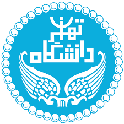چکیده:
ارتقای تابآوری بافتهای تاریخی- تجاری، از اقدامات اساسی برای کاهش خسارات مخاطرات طبیعی نظیر زلزله است. برای این منظور در گام اول باید وضعیت تابآوری این بافتها در برابر مخاطرات طبیعی براساس عوامل مؤثر بر آن ارزیابی شود. در این مقاله شاخصهای مؤثر در شناخت تابآوری بازارهای سنتی که از ارزش زیادی از نظر اجتماعی، فرهنگی و اقتصادی در کشور برخوردارند، مطالعه شده است. بدین منظور ابعاد فیزیکی، اقتصادی، اجتماعی و سازمانی تابآوری در این بافتها در قالب 42 زیرشاخص شناسایی و دستهبندی شدهاند. جنبههای فرهنگی– تاریخی نیز بهعنوان بُعد جدید معرفی و در هشت زیرشاخص دستهبندی شدهاند. در مجموع 50 زیرشاخص اصلی در هفده شاخص و پنج بُعد بررسی شده است. در گام بعدی، وزنهای این ابعاد و شاخصها و زیرشاخصها بهمنظور مشخص شدن تأثیر هر یک در تابآوری این بافتها، به روش تحلیل سلسلهمراتبی (AHP) تعیین شده است. نتایج این ارزیابی نشان میدهد که بُعد اجتماعی در تابآوری بازارهای سنتی دارای بیشترین ضریب وزنی است و باید برای ارتقای تابآوری در بازارهای سنتی به این بُعد توجهی ویژه مبذول شود. همچنین زیرشاخصهای دارای بیشترین اهمیت عبارتاند از: 1. کاربری بناها؛ 2. ارزش اقتصادی ملک و اجناس داخل مغازهها؛ 3. انطباقپذیری و پویایی گروههای مختلف برای بازیابی پس از زلزله؛ 4. قابلیت اجرای اقدامات بهسازی؛ 5. تجارب قبلی و آمادگی؛ 6. تمایل برای پرداخت وجه بهمنظور کاهش ریسک؛ 7. درآمد؛ 8. آموزشهای کسبشده در زمینۀ کاهش ریسک؛ 9. آسیبپذیری شبکۀ راهها. نتیجۀ این مطالعه نشان میدهد که تنها توجه به ارتقای یک شاخص یا صرفاً بهبود شاخصهای فیزیکی (همچون کاهش آسیبپذیری ساختمانها)، لزوماً بهترین گزینه برای ارتقای تابآوری بازارهای سنتی نیست. از نتایج این مطالعه میتوان برای تعیین اولویتهای بهسازی بخشهای مختلف بازارهای سنتی پیش از رخداد زلزله استفاده کرده و مؤثرترین مداخلات قابل اجرا را برای ارتقای تابآوری اجرا کرد.
Improving the resilience of urban fabrics is one of the main steps to reduce the social and economic consequences of natural disasters such as earthquakes. For this reason and in the first step, the status of the resilience of urban fabrics to natural hazards should be evaluated based on the relevant effective factors. This article evaluates the assessment of resilience in historic-commercial urban fabrics (traditional bazaars). The physical, economic, social and institutional dimensions of resilience have been defined and subdivided into 42 sub-indicators. Cultural and historical dimensions have also been added as a new dimension in the assessment of the resilience of these fabrics and are categorized into eight sub-indicators. Therefore, 50 key sub-indicators in 17 indicators in five dimensions were considered in this study. In the next step, and to evaluate the impact of each parameter on resilience, the weights of dimensions, indicators and sub-indicators are determined using the Analytical Hierarchy Process (AHP) procedure. The questionnaire also was developed and circulated among the relevant experts in this field. The results of this assessment indicate that the social dimension is of the essential importance for the resilience of traditional bazaars. In addition, the calculation of the final weights and the ranking of the 50 sub-indicators showed that the first nine sub-categories had an impact of more than 50% on resilience, including 1. Land use, 2. The economic value of the property and goods, 3. The adaptability of different groups for post-earthquake recovery, 4. Capacity for recovery, 5. Previous experiences and preparation, 6. Willingness to pay for risk reduction, 7. Income, 8. Educations in risk reduction and disaster management, and 9. Vulnerability of the roads. The results of this study can be used to prioritize rehabilitation of different places in traditional bazaars and to identify the most effective interventions to improve resilience

(پژوهیار,
,
,
)

